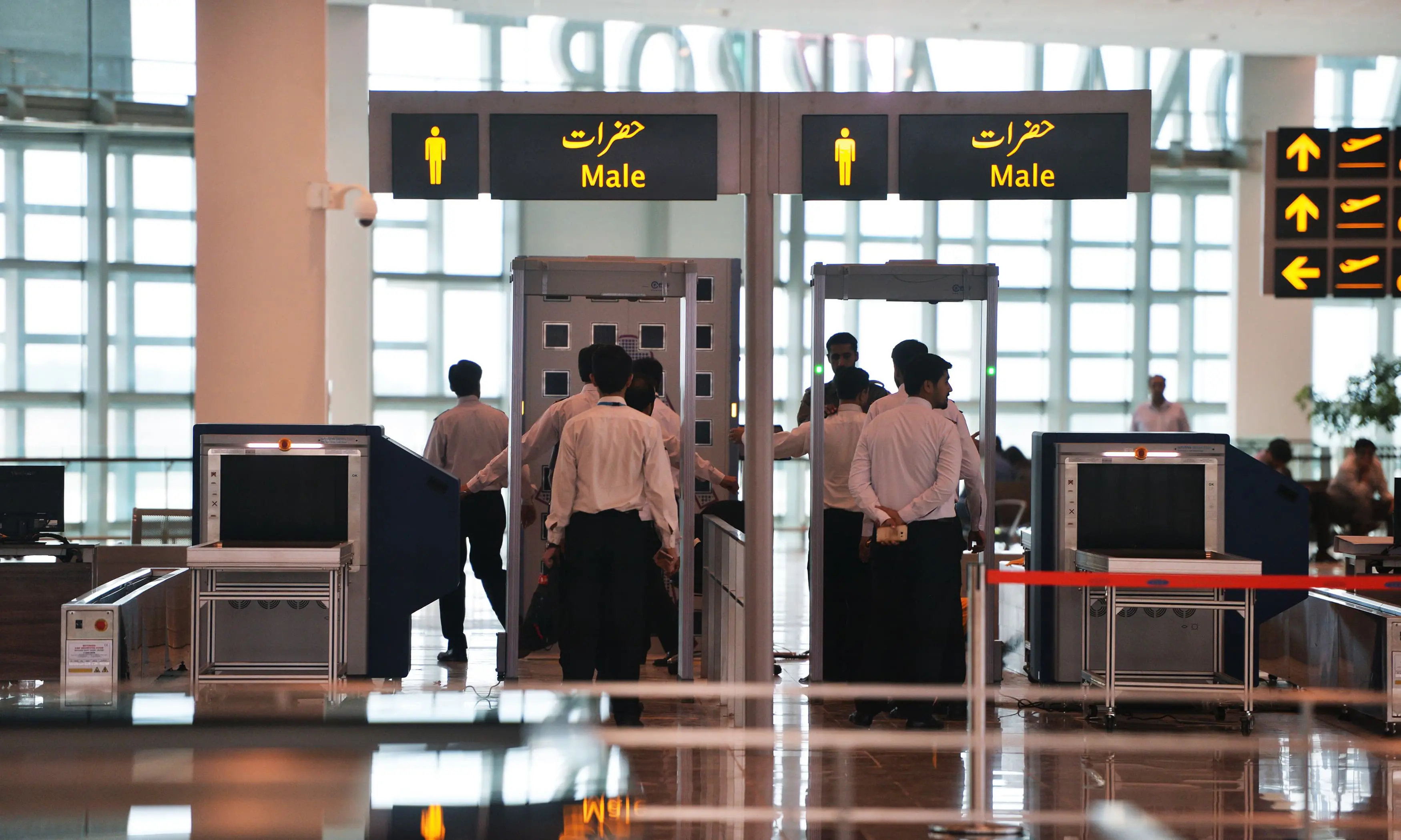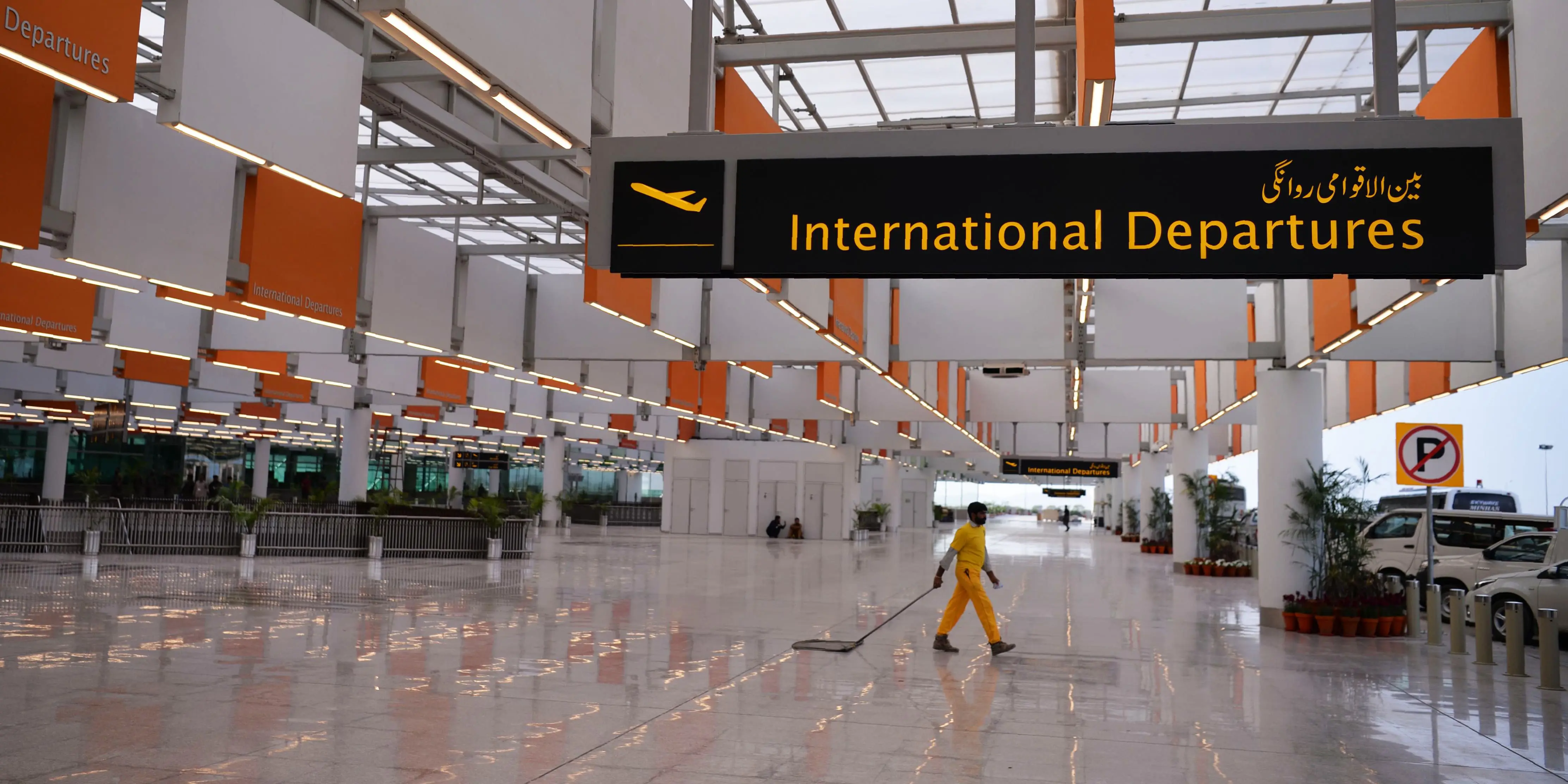
Islamabad, Pakistan - In a significant move aimed at bolstering the nation's aviation infrastructure, the Pakistan government has officially announced its plans for the construction of two new airports. The highly anticipated revelation of the airport locations has generated considerable interest and is expected to have a far-reaching impact on transportation development and the overall connectivity of the country. This ambitious undertaking underscores the government's commitment to long-term infrastructure projects and its vision for enhanced air travel Pakistan.
Boosting Aviation Infrastructure: Two New Airports on the Horizon
The announcement by the Pakistan government signals a major push to modernize and expand the country's aviation infrastructure. Recognizing the growing demand for air travel and the strategic importance of well-connected regions, the decision to build two new airports is seen as a crucial step towards facilitating economic growth, tourism, and overall accessibility. This expansion of airport facilities is expected to alleviate pressure on existing airports and cater to future increases in passenger and cargo traffic.
Strategic Airport Locations Revealed: A Boost for Regional Connectivity
The focal point of the announcement has been the unveiling of the location of Pakistan's airports . While the specific details of the exact sites are still being finalized, sources within the Pakistan government have indicated that the two new airports will be strategically situated to enhance regional connectivity and serve areas currently underserved by existing aviation facilities.
- Northern Hub: One of the new airport locations is reportedly in the northern part of the country. This is expected to significantly boost tourism to the scenic northern areas, facilitate trade, and improve accessibility for the local population. The development of a modern airport in this region aligns with the government's focus on promoting tourism and economic activity in these areas.
- Southern Expansion: The second airport location is earmarked for the southern region of Pakistan. This initiative aims to enhance connectivity in the south, potentially boosting industrial and agricultural activities, and providing better travel options for the residents of these provinces. The establishment of a new airport in the south is seen as a vital step in the region's transportation development.
The strategic placement of these new airport locations reflects a comprehensive approach to national connectivity, ensuring that different regions of Pakistan benefit from improved air travel facilities.
Driving Transportation Development and Economic Growth
The construction of these two new airports is projected to be a significant catalyst for transportation development across Pakistan. Improved air connectivity can lead to:
- Enhanced Trade and Commerce: Easier access for businesses and cargo transport can stimulate economic activity and facilitate trade, both domestically and internationally.
- Boost in Tourism: New airports, particularly in regions with tourism potential, can attract more domestic and international tourists, contributing significantly to the local and national economies.
- Improved Connectivity for Remote Areas: Airports in underserved regions can improve accessibility for residents, facilitating travel for education, healthcare, and employment opportunities.
- Job Creation: The construction and operation of new airports will generate numerous employment opportunities in various sectors, contributing to economic growth.
The Pakistan government views these infrastructure projects as vital components of its broader strategy for sustainable economic development and regional integration.

Air Travel Pakistan: Modernizing for the Future
The addition of these two new airports signifies a commitment to modernizing air travel Pakistan. The new facilities are expected to incorporate state-of-the-art technology, improved passenger handling capabilities, and enhanced safety features, bringing Pakistan's aviation sector in line with international standards. This modernization drive aims to provide a more efficient, comfortable, and secure travel experience for all passengers.
Key Highlights of the New Airport Projects:
- Strategic Locations: One in the north and one in the south of Pakistan, aimed at improving regional connectivity.
- Modern Infrastructure: Planned to include advanced technology and facilities for efficient operations.
- Economic Impact: Expected to boost trade, tourism, and create employment opportunities.
- Government Commitment: Underscores the Pakistan government's focus on transportation development.
- Enhanced Air Travel Pakistan: Aims to modernize the aviation sector and improve passenger experience.
Expert Opinions on the New Airport Initiative:
Aviation experts and economists have lauded the Pakistan government's decision to invest in new airport infrastructure.
"This is a much-needed step to address the growing demand for air travel in Pakistan," said Dr. Aisha Khan, a leading aviation analyst. "The strategic airport locations will be crucial in unlocking the economic potential of different regions and improving overall connectivity."
Mr. Shahid Malik, an economist specializing in infrastructure development, commented, "These infrastructure projects have the potential to be significant game-changers for Pakistan's economy. Improved air connectivity can attract foreign investment and facilitate trade, leading to sustainable growth."
Challenges and the Way Forward:
While the announcement of the new airports is a positive development, the successful execution of these ambitious infrastructure projects will require careful planning, efficient management, and transparent implementation. Key challenges that need to be addressed include:
- Land Acquisition: Ensuring smooth and equitable land acquisition for the airport locations.
- Funding and Financing: Securing adequate financial resources for the construction and long-term operation of the airports.
- Environmental Impact Assessment: Conducting thorough environmental impact assessments and implementing mitigation measures.
- Project Management: Ensuring efficient project management to avoid delays and cost overruns.
- Regulatory Framework: Establishing a robust regulatory framework for the operation and management of the new airports.
The Pakistan government has assured that it is committed to addressing these challenges through transparent processes and collaboration with international experts and stakeholders.
Public Reaction and Future Expectations:
The announcement of the new airports has been met with a generally positive response from the public. Citizens and business communities in the identified airport locations are particularly optimistic about the potential benefits these projects will bring to their regions. There is a strong expectation that these new infrastructure projects will not only improve travel convenience but also create economic opportunities and enhance the overall quality of life.
The successful completion of these two new airports will mark a significant milestone in the transportation development of Pakistan, further integrating the country into the global aviation network and paving the way for a more prosperous and connected future for air travel Pakistan. The focus now shifts to the meticulous planning and execution of these vital infrastructure projects to ensure their timely and efficient completion.
| Feature | Description | Expected Impact |
|---|---|---|
| Number of Airports | Two new airports planned for construction. | Increased air travel capacity, reduced congestion at existing airports. |
| Strategic Locations | One in the northern region and one in the southern region of Pakistan. | Improved regional connectivity, boost to local economies and tourism. |
| Government Initiative | Announced and backed by the Pakistan government. | Strong commitment and potential for efficient implementation. |
| Infrastructure Focus | Part of a larger push for transportation development in Pakistan. | Enhanced national connectivity, economic growth, and improved quality of life. |
| Modernization of Air Travel Pakistan | Aimed at bringing Pakistan's aviation sector in line with international standards. | Improved passenger experience, enhanced safety and efficiency. |
| Economic Benefits | Expected to create jobs, boost trade and tourism. | Sustainable economic growth and regional development. |
| Project Timeline | Specific timelines for construction and completion are yet to be fully detailed. | Public anticipation and focus on timely execution. |
| Environmental Considerations | Environmental impact assessments will be crucial during the planning and construction phases. | Ensuring sustainable development and minimizing negative environmental effects. |
| Funding Sources | Details regarding the funding mechanisms for these infrastructure projects are expected to be announced. | Financial stability and long-term sustainability of the projects. |
| Stakeholder Engagement | Collaboration with international aviation experts and local communities will be essential. | Ensuring best practices and addressing local needs and concerns. |
| Technological Integration | The new airports are expected to incorporate modern aviation technologies and systems. | Enhanced efficiency, security, and passenger convenience. |
| Regulatory Compliance | Adherence to national and international aviation regulations will be paramount. | Ensuring safety and operational standards are met. |
| Accessibility | Improved accessibility for residents in the regions where the new airport locations are situated. | Enhanced travel opportunities for education, healthcare, and employment. |
| Cargo Handling | Potential for enhanced cargo handling facilities to boost trade and logistics. | Facilitation of import and export activities, contributing to economic growth. |
| Future Expansion | The new airports could serve as hubs for future expansion of air travel Pakistan. | Long-term growth and development of the aviation sector. |
This comprehensive overview highlights the significance of the Pakistan government's announcement regarding the construction of two new airports. The strategic airport locations, the focus on transportation development, and the aim to modernize air travel Pakistan underscore the potential for significant positive impacts on the nation's economy and connectivity. The successful execution of these infrastructure projects will be crucial in realizing these benefits and ensuring a brighter future for air travel in Pakistan.
Top Airlines to book your flight:
;More Travel News
-
 30-Apr-20205 Situation When it Make Sense To Purchase Travel insurance?
30-Apr-20205 Situation When it Make Sense To Purchase Travel insurance? -
 08-Jul-2020List of Top 10 Travel Agents in Pakistan That You Must Need To Consult Before Starting Tour
08-Jul-2020List of Top 10 Travel Agents in Pakistan That You Must Need To Consult Before Starting Tour -
 06-Aug-20242 in 1 Package? Aima Baig Performs in Concert and Then Performs Umrah
06-Aug-20242 in 1 Package? Aima Baig Performs in Concert and Then Performs Umrah -
 25-Jul-2023Saudi Arabia Introduces Instant e-Visa for International Travelers
25-Jul-2023Saudi Arabia Introduces Instant e-Visa for International Travelers -
 20-Aug-2020Pakistan Government Decides To Develop Tourist Places Across The Country
20-Aug-2020Pakistan Government Decides To Develop Tourist Places Across The Country -
 25-Apr-2022Umrah Last Date from Pakistan
25-Apr-2022Umrah Last Date from Pakistan -
 18-Dec-2024Umrah Visa Rules for 2025
18-Dec-2024Umrah Visa Rules for 2025 -
 25-Jan-2022Schengen Visa from Pakistan and countries can you visit with it
25-Jan-2022Schengen Visa from Pakistan and countries can you visit with it
